6 April
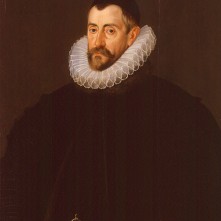
Sir Francis Walsingham
1523 – Death of Edward Stanley, 1st Baron Monteagle, soldier, peer and Knight of the Garter, at Hornby Castle.
1593 – Hanging of Henry Barrow and John Greenwood, religious separatists, after being condemned to death on 23rd March, for writing and publishing seditious literature.
1582 – Hanging of Nicholas Nugent, Solicitor General for Ireland, Baron of the Irish Court of Exchequer, and Chief Justice of the Irish Common Pleas, for treason after being implicated in the rebellion of his nephew, William Nugent.
1590 - Death of Sir Francis Walsingham, Elizabeth I's principal secretary, at the age of about fifty-eight. Although he had served the Queen for many years, he died in debt, as he had underwritten the debts of Sir Philip Sidney, his son-in-law.
Walsingham was an incredibly important man during Elizabeth I’s reign, being a statesman, private secretary, adviser, diplomat and spymaster, and he probably saved the Queen’s life many times by uncovering various plots against her. Elizabeth called him her “Moor”.
1605 (5th or 6th) – Death of John Stow, historian and antiquary, in London at the age of eighty. He was buried in St Andrew Undershaft Church. Stow's works included his 1561 “The woorkes of Geffrey Chaucer, newly printed with divers additions whiche were never in printe before”, the 1565 “Summarie of Englyshe Chronicles” and his famous “Annales, or a Generale Chronicle of England from Brute until the present yeare of Christ 1580”.
1621 – Death of Edward Seymour, 1st Earl of Hertford, son of Edward Seymour, Duke of Somerset, and Anne Stanhope, and husband of Lady Katherine Grey (Lady Jane Grey's sister). He was aged eighty-one at his death, and had been married three times. His other wives were Frances Howard, gentlewoman of Elizabeth I's Privy Chamber, and widow Frances Prannell, who was the daughter of Thomas Howard, 1st Viscount Howard of Bindon. All three of his marriages were secret ones.
7 April
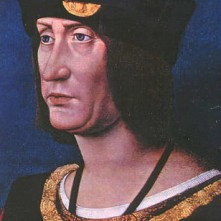
Louis XII
1537 – Robert Aske and Thomas Darcy, 1st Baron Darcy, were sent to the Tower of London. Aske was one of the rebel leaders in the 1536 Pilgrimage of Grace rebellion, and Darcy became involved with the rebels after yielding Pontefract Castle to them. Darcy was beheaded 30th June 1537, and Aske was hanged in chains on 12th July 1537.
1538 - Elizabeth Boleyn, Lady Wiltshire, wife of Thomas Boleyn and mother of the late Queen Anne Boleyn, was buried in the Howard Chapel of St Mary’s Church, Lambeth.
1571 – Burial of Richard Onslow, lawyer and Speaker of the House of Commons, in St Chad's Church, Shrewsbury.
1589 – Death of Sir Henry Gates, member of Parliament, Gentleman of Edward VI's Privy Chamber, Controller of the Petty Custom at the port of London, Receiver-General of the duchy of Cornwall and member of the Council of the North.
1590 – Burial of Sir Francis Walsingham, Elizabeth I's principal secretary, at St Paul's at 10pm in the same tomb as Sir Philip Sidney. He had died the previous day.
1619 – Burial of Robert Rich, 1st Earl of Warwick, at Felsted.
8 April
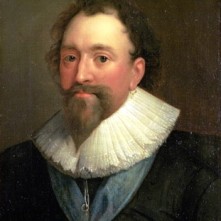
William Herbert
1580 – Birth of William Herbert, 3rd Earl of Pembroke, courtier, patron of the arts and son of Henry Herbert, 2nd Earl of Pembroke, and Mary Sidney, sister of Sir Philip Sidney.
1586 – Death of Martin Chemnitz, Lutheran theologian and a man known as "Alter Martinus" or the "Second Martin" after Martin Luther.
1608 – Death of Magdalen Browne (née Dacre), Viscountess Montagu and patron of Roman Catholics, at Battle following a stroke in January 1508. She was buried at Midhurst. Magdalen was the daughter of William Dacre, 3rd Baron Dacre of Gilsland and the second wife of Anthony Browne, 1st Viscount Montagu. She served as Maid of Honour at Mary I's wedding and was a staunch Catholic. Even though she was Catholic, she had a good relationship with Elizabeth I, following her and her husband's declaration that they would be loyal to the Queen if the Pope invaded or caused trouble. When the Queen visited the Montagus in 1591, they kept their priests hidden.
9 April

Edward IV
1533 - A delegation of the King’s councillors, headed by the Duke of Norfolk, visited Catherine of Aragon and informed her that Henry VIII was now married to Anne Boleyn. After they left, Catherine’s Chamberlain, Sir William Blount, 4th Baron Mountjoy, had to tell her that she had been demoted from Queen to Dowager Princess of Wales.
1557 – Cardinal Reginald Pole's legatine powers were revoked by Pope Paul IV.
1582 – Death of Richard Bertie, evangelical, member of Parliament and second husband of Katherine Willoughby (other married name Brandon), Duchess of Suffolk, at Bourne. He had met Katherine when he became her Gentleman Usher. He was buried with Katherine, who died in 1580, at Spilsby.
1590 – Funeral of Ambrose Dudley, Earl of Warwick. He was laid to rest in the Beauchamp Chapel of St Mary's Church, Warwick.
1626 – Death of Francis Bacon, Viscount St Alban, Lord Chancellor, politician and philosopher. It appears that Bacon died from inhaling nitre or opiates in a botched experiment.
10 April
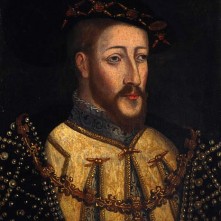
James V
1550 – Edward Seymour, Duke of Somerset, was re-admitted into Edward VI's council.
1559 – Death of Sir Rice Mansel, soldier and administrator, at his home in Clerkenwell. He served Henry VIII as Vice-Admiral in 1542, in France and Scotland, and in 1544 as Knight-Marshal. He was also Chamberlain of Chester.
1585 – Death of Pope Gregory XIII, the Pope known for his introduction of the Gregorian Calendar, in Rome. He was succeeded by Pope Sixtus V.
1586 – Death of Sir Bernard Drake, sea captain, in Crediton, Devon, from probable typhus. It appears that he caught the disease from Portuguese prisoners whose ships he had captured, which were laden with Brazilian sugar, on his voyage to the West Indies.
1588 – Death of Robert Glover, herald, genealogist and antiquary in Elizabeth I's reign. He was buried in St Giles-without-Cripplegate.
1605 – Death of John Young, Bishop of Rochester and Vice-Chancellor of the University of Cambridge, at Bromley Palace. He was seventy-one, and was buried at Bromley Church.
1635 – Death of Lady Helena Gorges (née Snakenborg), previous married name Parr. Helena was Swedish but came to England in 1564 with her mistress, Princess Cecilia, Margravine of Baden, daughter of Gustav Vasa. She fell in love with William Parr, Marquis of Northampton and brother of Catherine Parr, and so remained in England and joined Elizabeth I's household. Helena married Parr in 1571 after the death of his first wife, Lady Anne Bourchier (Parr had actually been divorced from her since 1551). After Parr died, she married courtier Thomas Gorges and had eight children with him. She was laid to rest in Salisbury Cathedral.
11 April
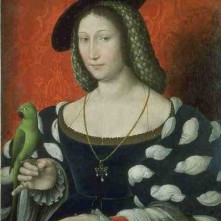
Marguerite de Navarre
1533 – The Royal Council was ordered by Henry VIII to recognise Anne Boleyn as Queen.
1548 – Death of Sir John Welsbourne, Gentleman of the Privy Chamber to Henry VIII and Justice of the Peace.
1554 - Sir Thomas Wyatt the Younger was beheaded and then his body quartered for treason, for leading Wyatt's Rebellion against Queen Mary I.
1609 - Death of John Lumley, 1st Baron Lumley, conspirator (Ridolfi Plot, patron and collector. His library was said to be one of the largest in England, and he collected manuscripts, books, paintings, sculptures, marble busts and furniture. Lumley was buried at night, probably so that he could be buried with a Catholic service, in the Lumley Chapel of St Dunstan's in Cheam.
12 April
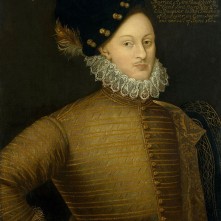
Edward de Vere
1533 - Anne Boleyn attended mass on Easter Saturday “with all the pomp of a Queen, clad in cloth of gold, and loaded (carga) with the richest jewels”. It was her first public appearance as Queen, and it was time to make a statement that she was Henry VIII’s rightful wife and Queen.
1535 – Death of Giles Duwes (Dewes), musician, royal librarian and French tutor to Henry VIII's children: Arthur, Henry, Margaret and Mary, and to Henry VIII's daughter, the future Mary I. He also taught Mary I music. He was buried in the church of St Olave Upwell in London.
1550 – Birth of Edward de Vere, 17th Earl of Oxford, courtier and poet. The Oxfordian theory of Shakespearean authorship proposes that de Vere wrote Shakespeare's works and some believe that he was the illegitimate son of Elizabeth I.
1587 – Death of Sir Thomas Bromley, Lord Chancellor to Elizabeth I, at York House in London. He was buried in Westminster Abbey. It was Bromley who had presented Elizabeth I with Parliament's petition for the execution of Mary, Queen of Scots, and it was he who applied the Great Seal on her execution warrant in 1587.
1639 – Death of courtier Robert Carey, 1st Earl of Monmouth, youngest son of Henry Carey, 1st Baron Hunsdon, and grandson of Mary Boleyn.

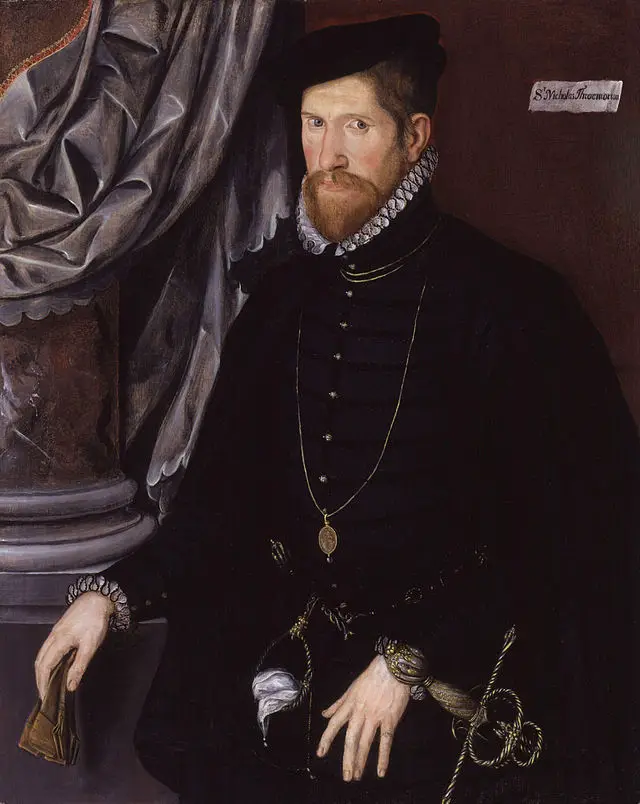
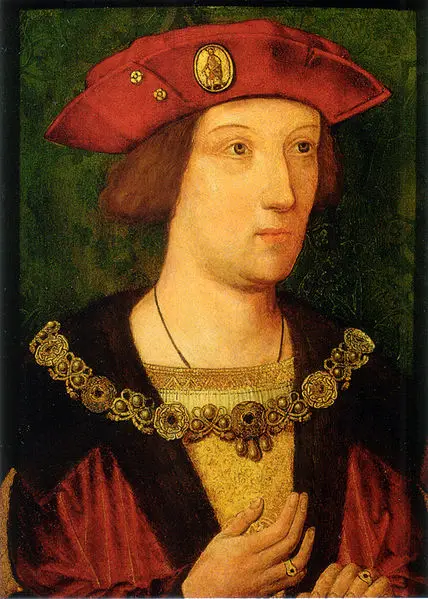
Leave a Reply